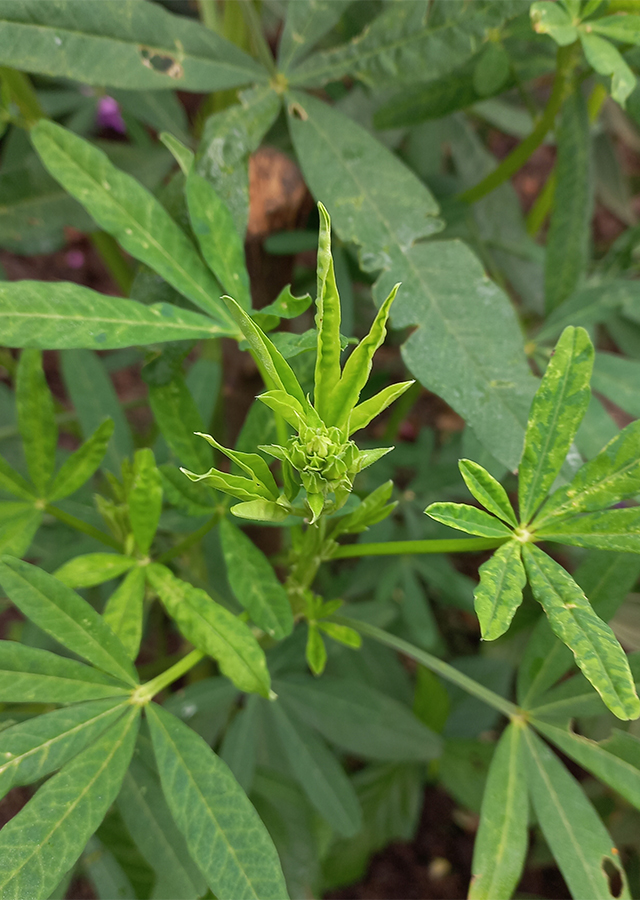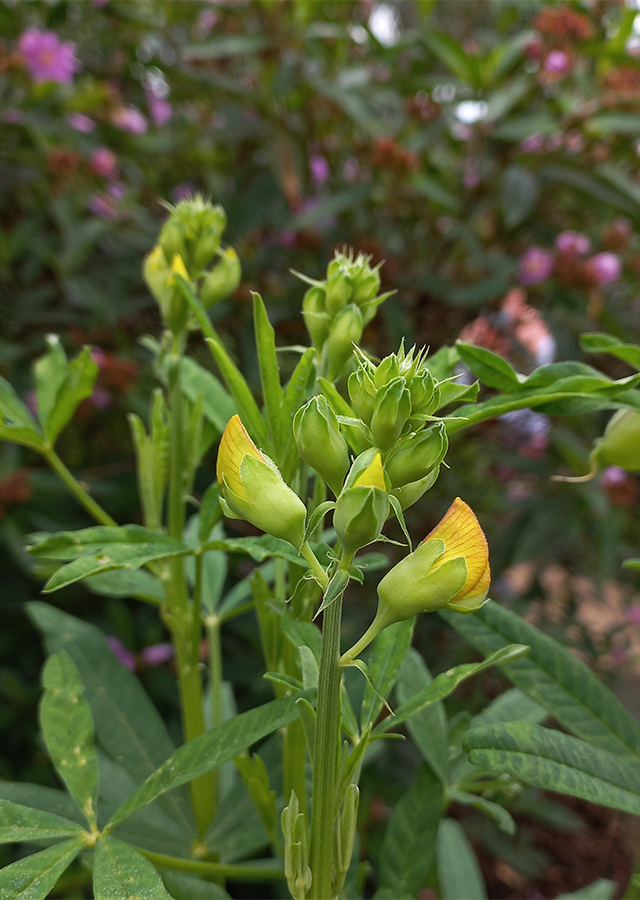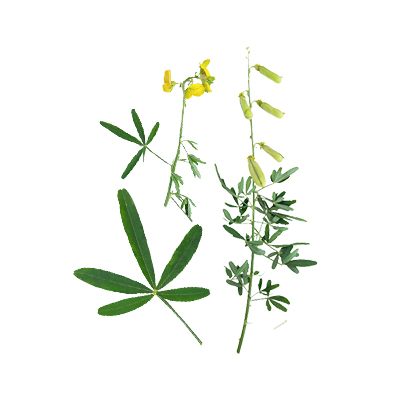Rattlebox
Crotalaria quinquefolia L.
Fabaceae
Location in our garden
Beneficial Weed



Synonym
Crotalaria anisophylla Urb.
Crotalaria heterophylla L.f.
Lupinus javanicus Burm.f.
Habitus
Herbaceous. An erect annual, herb, grows up to 2 metres in height.
Part Used
Leaves
Seeds
Growing Requirements
Full Sunshine
Habitat
Forest
Roadside
Terrestrial
Overview
Rattlebox is native to South and South East Asia and Australia and naturalized in Mauritius in the first part of the 1800s. The genus Crotalaria comprises about 600 species distributed throughout the tropics and subtropical regions of the world. The major distributions are from Bangladesh, Cambodia, India, Indonesia (Java, Sulawesi, Sumatra), Laos, Malaysia, Myanmar, Nepal, Philippines, Singapore, Sri Lanka, Thailand, and Vietnam. The plant is harvested from the wild for local use as a medicine and source of fibre. It is sometimes grown as a green manure and cover crop. As a medicinal plant, the leaves of rattlebox or Crotalaria quinquefolia are often combined with the leaves of Crotalaria retuse, to be used internally and externally as a treatment for fever. In addition, the flowers is edible as a vegetable.
Vernacular Names
Crotalaire á cinq feuilles (French), Kambe, Kambi, Neerugili gichha, Wellia-tandale-cotti (India), Katanda, Buli-lawa, Palpaltog, Suso-susoyan (Philippines).
Agroecology
Rattlebox is a weed of cultivated fields, that mainly grows in wet rice fields and moist places. Also it can found in open forest, swampy locations, ruderal sites, along roadsides, in old fields, and in waste ground, at elevations up to 900 metres. Generally, the plants is prefer a sunny position and succeeding in dry to moist, well-drained soils.
Morphology
- Roots - taproot.
- Stems - erect or ascending, solid, greenish, angular, not spiny. Stems or young twigs sparsely to densely hairy.
- Leaves - alternate, compound, pinnately arranged, palmately 5-foliate, lanceolate, elliptic, subsessile, obtuse, margins entire, hairy on one or both surfaces, stipules green and triangulate to lanceolate or foliaceous.
- Flowers - zygomorphic, calyx 5-lobed and glabrous. Petals orange or yellow, bicolored or with red, purple or yellow streaks or spots, glabrous, claws present. Stamens 10, filaments alternately long and short, filaments united in an open sheath.
- Fruits - pod, elongate, oblong or ellipsoidal, about 7 cm long and 2 cm in diameter. Exserted from calyx, inflated or turgid, glabrous or glabrate, stipitate, dehiscent, many seeded, not beaked.
- Seeds - ovoid to rounded in outline, cordiform, notched at one end, smooth, brown or black.
Cultivation
Propagated by seed. Pre-soaking the seed for 12 hours in warm water can help to reduce germination time.
Chemical Constituents
Pyrrolizidine alkaloids, monocrotaline.
Traditional Medicinal Uses
- The leaves mixed with those of Crotalaria retusa, consumed or applied externally for fever, scabies, lung afflictions, and impetigo.
- The seedpods are used for treating snake and millipede bites.
Part Used
Reference Sources
- Useful Tropical Plants Database. 2021. Crotalaria quinquefolia. http://tropical.theferns.info/viewtropical.php?id=Crotalaria%20quinquefolia. 15-11-2021.
- Stuartxchange. 2018. Philippine Medicinal Plants: Suso-susoyan. http://www.stuartxchange.org/Suso-susoyan. 15-11-2021.
- Biodiversity India. 2015. Crotalaria quinquefolia L. https://indiabiodiversity.org/species/show/229365#natural-history. 15-11-2021.
- Pacific Island Ecosystems at Risk. 2013. Crotalaria quinquefolia. http://www.hear.org/pier/species/crotalaria_quinquefolia.htm. 15-11-2021.
- Florabase. 2020. Crotalaria quinquefolia L. https://florabase.dpaw.wa.gov.au/browse/profile/16330. 15-11-2021.

